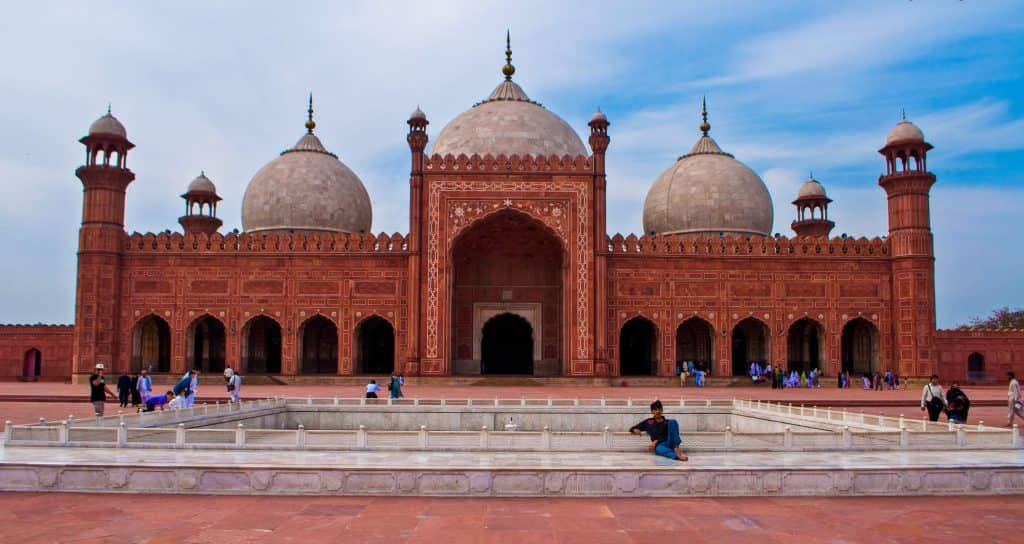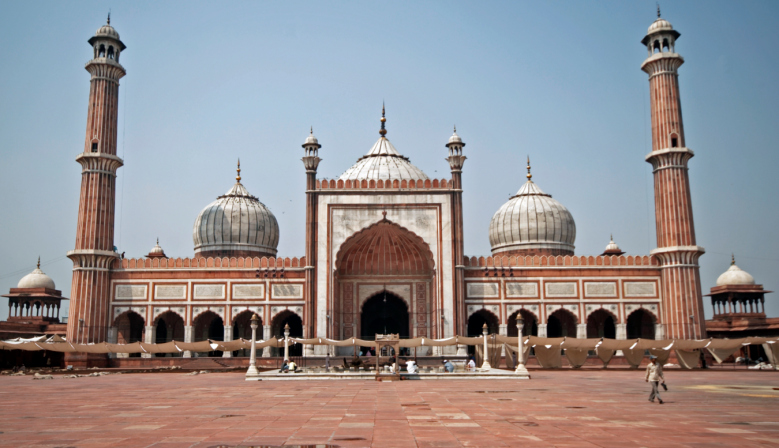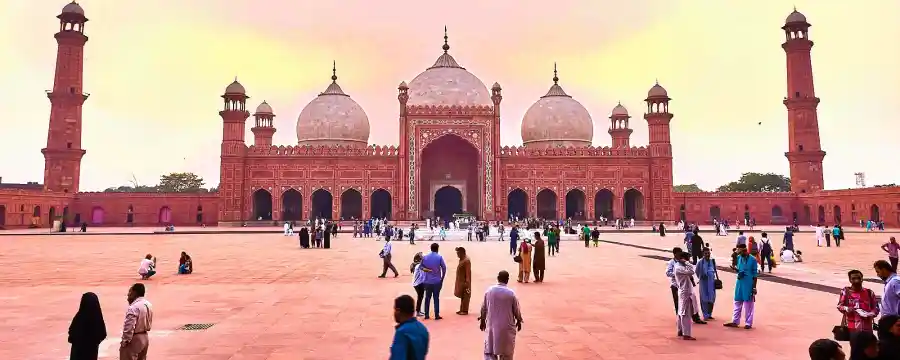Lahore, the heart of Pakistan, is a city steeped in history and culture. Among its many treasures, the Badshahi Mosque stands tall as a testament to the grandeur of the Mughal era. This magnificent masterpiece of Islamic architecture not only represents a bygone era but also continues to be a symbol of cultural and historical pride for the people of Pakistan. In this blog, we will explore the fascinating history, architecture, and significance of the Badshahi Mosque in Lahore.

Historical Background of Badshahi Mosque
The Badshahi Mosque, also known as the “Imperial Mosque,” was constructed during the reign of the sixth Mughal Emperor, Aurangzeb. Construction began in 1671 and was completed in 1673, making it one of the last great architectural works of the Mughal dynasty. The mosque was built to commemorate Aurangzeb’s military campaign in the Deccan region, and it was intended to surpass the grandeur of its predecessor, the Jama Masjid in Delhi.

Grand Design:
The Badshahi Mosque is renowned for its grand design and imposing size. It covers an area of 276,000 square feet and can accommodate up to 55,000 worshipers in its courtyard. Its main prayer hall, which is the largest in the world, can accommodate around 10,000 people.

Red Sandstone and Marble:
The mosque’s façade is crafted from red sandstone, giving it a striking appearance. The interior is adorned with intricate white marble inlay work, and the floor is covered in exquisite geometric designs.
Four Minarets:
The mosque features four towering minarets, each standing at a height of 176 feet (54 meters). These minarets are marked by elegant balconies and are capped with beautiful domed kiosks.
Central Dome:
The central dome is an architectural marvel, rising to a height of 60 meters and crowned with a gilded copper finial. The dome is surrounded by smaller domes and kiosks, enhancing the mosque’s overall symmetry and beauty.

Decorative Elements:
The Badshahi Mosque is adorned with various decorative elements, including intricate frescoes, Islamic calligraphy, and finely carved stone screens. The calligraphy in the mosque is particularly noteworthy, featuring verses from the Quran and the names of the Prophet Muhammad and his companions.
Significance of Badshahi Mosque
Cultural Icon:
The Badshahi Mosque is not only a place of worship but also a cultural icon of Pakistan. It has been featured on postage stamps, currency notes, and various forms of art, making it a symbol of national pride.

Tourist Attraction:
The mosque attracts tourists and visitors from around the world who come to admire its breathtaking architecture and learn about Pakistan’s rich history.

Preservation Efforts:
Over the years, various preservation efforts have been undertaken to ensure the mosque’s longevity and beauty. Restoration work has been carried out to maintain its original splendor.
Place of Worship:
While the mosque is a tourist attraction, it remains a functioning place of worship, hosting daily prayers and special religious events.

The Badshahi Mosque in Lahore is a testament to the architectural brilliance of the Mughal era. Its grandeur, intricate design, and historical significance make it a must-visit destination for anyone interested in the rich cultural heritage of Pakistan. It stands as a reminder of the glory of the Mughal dynasty and continues to be a source of pride for the people of Lahore and the entire nation. If you ever have the opportunity to visit Lahore, make sure to explore this marvel of Islamic architecture and immerse yourself in its rich history and beauty.
Read more about “Lahore Fort” on Fast News HD | Home of Nation


